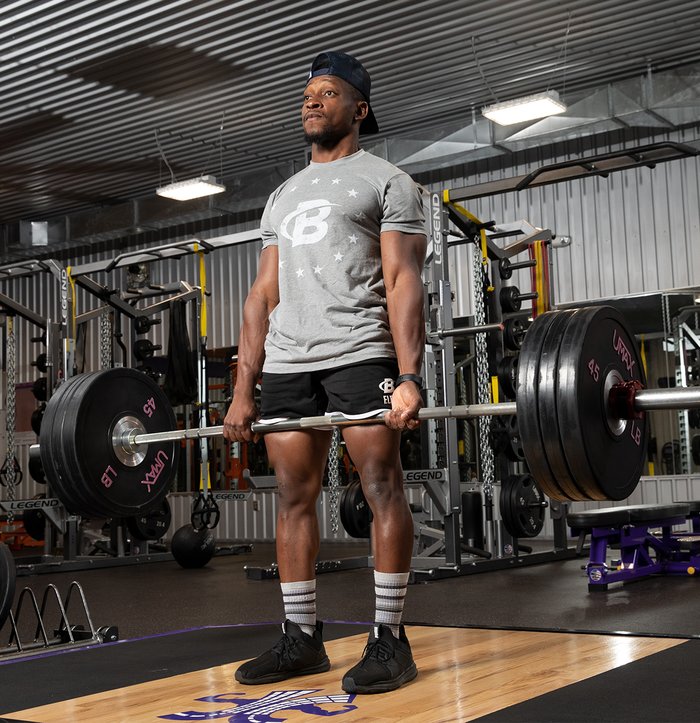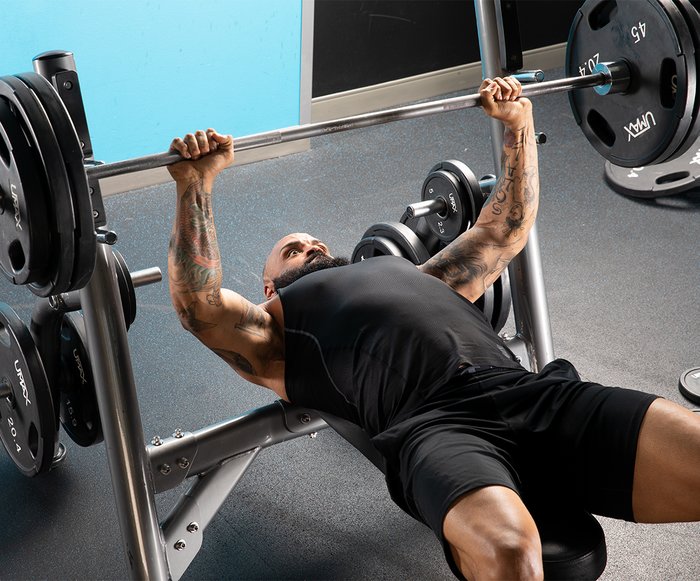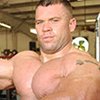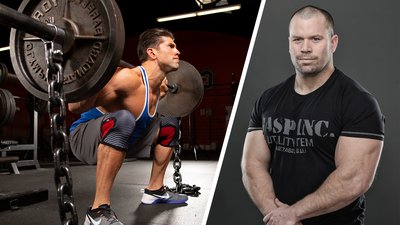Q: I've been powerlifting for three years, and I've seen new powerlifting programs popping up faster than pills at a Charlie Sheen party. How do I know if one will be effective for me?
"If you break the law, you get thrown in jail," my mentor, close friend, and world champion powerlifter, the late Fred Hatfield, Ph.D., once screamed at a young powerlifter at a seminar we gave in Iwakuni, Japan.
Fred was referring to what he called the Seven Granddaddy Laws for scrutinizing the design of a training program. He had come up with these laws through decades of research and application and to him, an optimal training program meant that you had to obey all seven. Short of that, the more laws you obeyed, the more effective your training program would be.
Fred didn't take kindly to those who broke the laws. The more you broke, he believed, the longer you sentenced yourself to a self-imposed prison of poor gains.
As with so many other things that had to do with strength training, Fred Hatfield was spot on with these laws. Follow them, and you will see your results improve. (Note: All the laws are interrelated; whether you obey one affects whether you will be able to obey another.)
Law 1: The Program Must Allow for Individual Differences
Everyone has a unique body and a unique genetic blueprint that brings with it different abilities, strengths, and weaknesses. We are all different, so we will respond differently to a specific training program.
For example, different hip structures dictate different squatting mechanics. Different levels of strength and coordination, pain tolerances, recuperative abilities, stress levels outside the gym, and past injuries all affect how well each person can perform each exercise. Over the course of your lifting career, assuming you improve your work capacity, you will become a "different" lifter. One size does not fit all, and if individual differences are not considered, that's jail time for your gains.
Does the program allow for individual differences, or does it seem to assume that everyone is the same, should lift the same way, or be held to the same standard? If so, be very suspicious.
Law 2: The Program Must Use the Overcompensation Principle
Throughout nature, change is driven by stress. Give your body a reasonable amount of training stress, and it will give you bigger and stronger muscles to combat it. This "overcompensation" prepares you for greater stresses in the future.
You're not going to experience gains if the program doesn't lay out a path for greater resistance, and include steadily increasing challenges. (Note: Newbie gains happen exponentially faster than the gains of a seasoned veteran, and a true newbie can get stronger simply by practicing movements at almost any weight.)
Law 3: The Program Must Use the Overload Principle
Directly tied into the overcompensation principle is a principle that to gain size or strength, you must stress your muscles beyond what they're already used to.

However, it is impossible to increase the amount of weight you lift week after week forever. There is a limit to what your body can bear! As such, there are other ways to increase overload.
Does the program include other ways to overload, such as shorter rest intervals, decreased mechanical advantage, greater number of reps, increased frequency, greater number of sets, and increased volume? If you want to advance, you'll need to do more than just add weight.
Law 4: The Program Must Adhere to the SAID Principle
SAID stands for Specific Adaptation to Imposed Demand. It simply means your body will respond in a highly specific manner to the training demands placed on it.
If your goal is to build limit strength, or powerlifting strength, you simply must train heavy with optimal form. Light work can have its place in strength training, but heaviness must be in there somewhere! Round out your specific training with adequate rest intervals and training assistance exercises to build the supporting musculature.
No, this doesn't mean that you should only practice the powerlifts, or only train heavy doubles or triples. But it means they should be in there somewhere!
Law 5: The Program Must Follow the Use/Disuse Principle
This basically comes down to "Use it or lose it." Your muscles will hypertrophy and strengthen with use, and atrophy and weaken with disuse.
In action, this means you have to practice your powerlifts if you want to at least maintain those skills. If you step away from them and focus on, say, pure machine-and-dumbbell bodybuilding for a while, your powerlifting strength will probably suffer to some degree. No longer doing the signature power lifts will force your body to adapt to the lowered stress by degrading your technical skills and becoming weaker.
The good news is, once you've developed powerlifting skills, you can quickly redevelop them after a hiatus because of the neurological foundation you've built through previous training.
Law 6: The Program Must Follow the Specificity Principle
Leg presses, Hammer Strength benches, and Smith machine deadlifts can certainly help you muscle up, but they won't develop neuromuscular adaptation for powerlifting unless you rightly prioritize them below the big lifts.

When legendary Russian strength coach Pavel Tsatsouline talks about "greasing the groove," he's talking the specificity principle. You will become a better bench presser by performing the bench press. It may seem obvious, but you'd be surprised how many people say their biggest priority is a stronger bench, but don't bench with much frequency, and don't devote much of their training volume to actual benching.
Yes, we all usually need some kind of assistance work. But while you may need to build your triceps strength with specific isolation exercises, you get the greatest neurological benefits by practicing the exercise you will use in competition.
Law 7: The Program Must Adhere to the GAS Principle
According to its originator, the pioneering endocrinologist Dr. Hans Selye, General Adaptation Syndrome (GAS) is comprised of three stages:
- The "alarm stage" caused by the application of intense training stress (the Overload Principle).
- The "resistance stage" when your muscles adapt in order to resist the stressful weights more efficiently (the Overcompensation, SAID, and Use/Disuse Principles).
- The "exhaustion stage" when, if you continue to apply stress, you exhaust your reserves and risk severe overtraining, or worse.
For the powerlifter, this mean there must be a period of low intensity training or complete rest following periods of high-intensity training. Does the program include enough down time to let your muscles heal and then adapt to get stronger? Otherwise, lack of adequate rest can trigger a downward spiral.
How much rest you need depends on how intensely you've trained and how quickly you're able to recover. This is why powerlifters schedule a regular reload week, and come back much stronger after they've taken time to recharge.
No matter how you schedule it, keep in mind that you need rest from stress that arises both inside and outside the gym. Work hard, rest hard!
To find some well-designed programs that fit your goals, check out Bodybuilding.com All Access.

